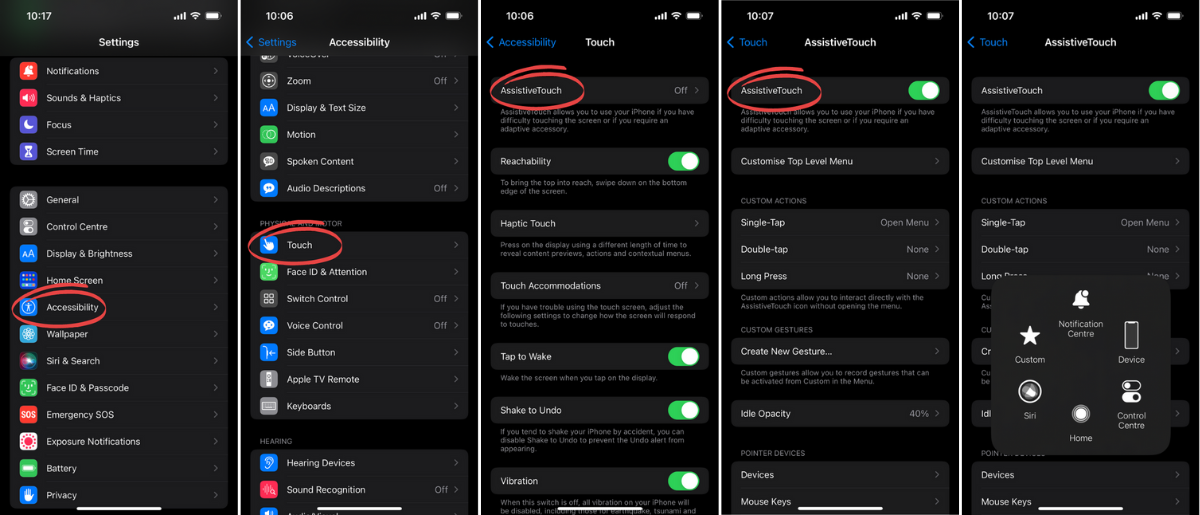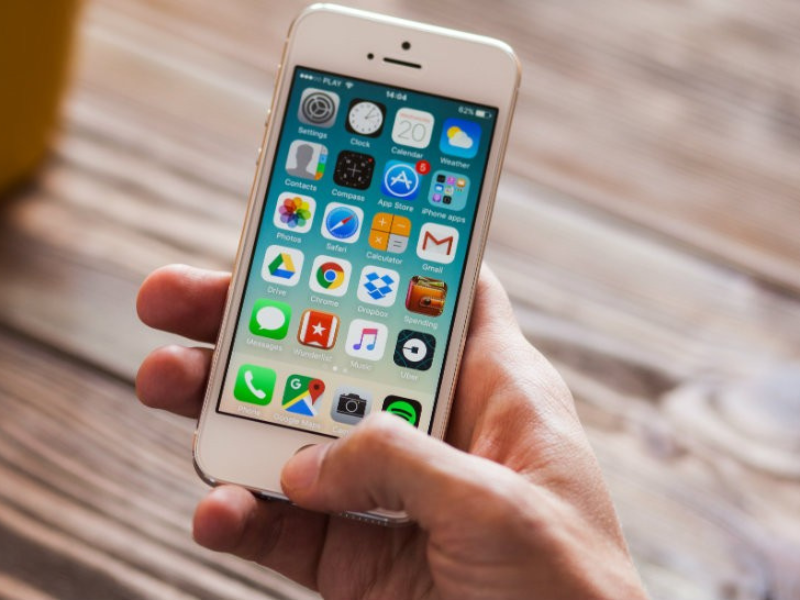iPhone home button unresponsive? Is it stuck and won’t activate your phone? Or perhaps you have to press the home button very hard to get it to respond. We know how frustrating it can be when your iPhone home button stops working and even worse if your iPhone is out of the Apple warranty period. We’ve provided some handy tips on how to solve this problem, and if they don’t work, then don’t hesitate to seek help from our expert Repair Heroes.
My iPhone Home Button is Stuck and Won’t Turn On
Like all electronic components, the iPhone physical home button can break through use or even sustain physical damage via a drop. At this stage, no amount of finger pressing or double pressing is going to bring an unresponsive home button back to life and regain home button functionality. Either the home button is cracked or the cable connecting it to the iPhone’s logic board is damaged. This is inevitably a hardware problem due to accidental damage or liquid damage, rather than software issues. But, if you find your iPhone home button not working there’re a few things you can do before considering having it repaired. First, let’s look at the different types of iPhone home buttons.
Prior to the iPhone 5S, iPhone home buttons were literally physical buttons, much like a doorbell button. If your iPhone home button is stuck and won’t turn on, regaining full functionality is merely a matter of replacing the home button with a new part. That said, any iPhone model from iPhone 5 and below is probably past its use-by date and is rarely seen in use these days.
With the iPhone 5S, Apple introduced Touch ID. This added a far superior level of security and convenience. Compared with inputting a passcode, Touch ID was a much quicker method of opening your iPhone. It also laid the groundwork for Apple Pay transactions across countless cashiers accepting tap-and-pay.
The Touch ID home button is also a mechanical button so you can replace it if the home button on your iPhone is not working. These designs can even develop faults from normal wear. There’s a catch, however. Once you replace the home button with an aftermarket part, Touch ID is lost. The only way to regain Touch ID with a broken home button is to head to an Apple store or have the device repaired by Apple or a Certified Apple Repairer – at a substantial cost. A non-Apple Certified independent repair shop can’t tackle these jobs.
From the iPhone 7, iPhone 7 Plus and up, Apple has moved from a physical home button to a sensor – the home button doesn’t actually move like its mechanical predecessor. That ‘movement’ you feel is really the Taptic Engine unit creating a vibration to make the home button feel like it’s ‘clicked’. These style home buttons are still used on the 2nd generation and 3rd generation iPhone SE.
Replacing these iPhone home buttons add an additional caveat. When replaced with an aftermarket part they won’t work at all. No Taptic ‘click’, no Touch ID, nothing. This is because the home button sensor is paired with the logic board for security purposes. Fortunately, there are third-party iPhone 7 and up home buttons available as a repair option that will provide that Taptic ‘click’, but still, they won’t provide Touch ID functionality. Again, that’s a job for Apple.
So how can you access your iPhone if your iPhone is suffering home button issues? You’ll still need to use your iPhone until you can get an appropriate repair – whether that’s an Apple replacement or a third-party replacement (without Touch ID).
Tip 1: Add a Software Home Button with AssistiveTouch
Fortunately, Apple’s iOS provides a software workaround for a temporary solution when your iPhone home button is broken and can’t unlock. It’s called AssistiveTouch and is part of the iOS accessibility functions, effectively adding a virtual home button along with other button functions to your screen. Here’s how to add AssistiveTouch (onscreen home button):
- To access the AssistiveTouch menu, go to Settings> Accessibility>Touch>AssistiveTouch.
- At the top of the iPhone screen, you’ll see a slider to turn AssistiveTouch on. Give that slider a single tap.
- Instantly you’ll see a black square icon on-screen with a round white circle in it – give it a press.
- This will bring up a larger square with six ‘buttons’, the one at the bottom being a software home button. Awesome – now you have an accessibility shortcut and a screen home button. You’re back in business.

But, what if your iPhone home button is broken and you can’t unlock your phone to get to the Settings app to turn on AssistiveTouch, or there’s an app already open and you can’t quit it because the home button isn’t working? Here’re a couple of tricks to get a home button fix happening on your iPhone’s display…
Tip 2: Ask Siri to Turn On AssistiveTouch
Perhaps the easiest way to turn on the AssistiveTouch menu is to use voice control and ask your iPhone to do it for you. Simply say to your device, “Hey Siri, turn on AssistiveTouch,” and your AssistiveTouch menu should display and turn the feature on. But what if you’re using an older iPhone and you don’t have Siri turned on? Here’s another method.
Tip 3: Settings Back Doors
With iOS 11 Apple introduced the Control Centre – a shortcut to various system settings such as the torch function, Wi-Fi, Bluetooth, and other additional information. The Control Center can always be brought up with a quick swipe from the very bottom of the screen upwards, whether your iPhone is locked or unlocked, or you have an app open or otherwise. Once you have the Control Centre on-screen, press and hold (i.e. a long press) on the Bluetooth button. This will present a new Control Centre menu displaying toggle buttons for Aeroplane Mode, Mobile Data, Wi-Fi, AirDrop, Personal Hotspot, and Bluetooth. Again, press and hold down (long press) the newly displayed Bluetooth button.
This will display another Control Centre menu with available Bluetooth devices, then, right down the bottom, ‘Bluetooth Settings’. Give that button a click and you’ll find yourself in the Settings app, exactly where you need to be to enable Assistive Touch – Accessibility>Touch>AssistiveTouch, and turn it on. Your Assistive Touch button is now ready for access. Now you can use your device again and call your nearest iPhone repairer for a home button fix.
Tip 4: Get Your Broken Home Button Replaced
If you’re out of your Apple warranty and don’t want to pay an exorbitant fee to get it replaced by Apple, then fix2U Repair Heroes are your best option. We come to your location of choice and repair your iPhone button, making sure it’s as good as new in no time. Best of all, it’s a lot cheaper to fix the home button on iPhone that’s not working than to buy a new phone.
Want to get your home button fixed today? Why not book a same-day iPhone repair with us, and let us restore your home button so you can get your life back. We have such confidence in our Repair Heroes and the parts we use and will even provide you with a market-beating 5-year warranty. If we don’t have a Repair Hero available in your location, we’ll offer you a same-day Express Mail-In Repair service with free return shipping.

